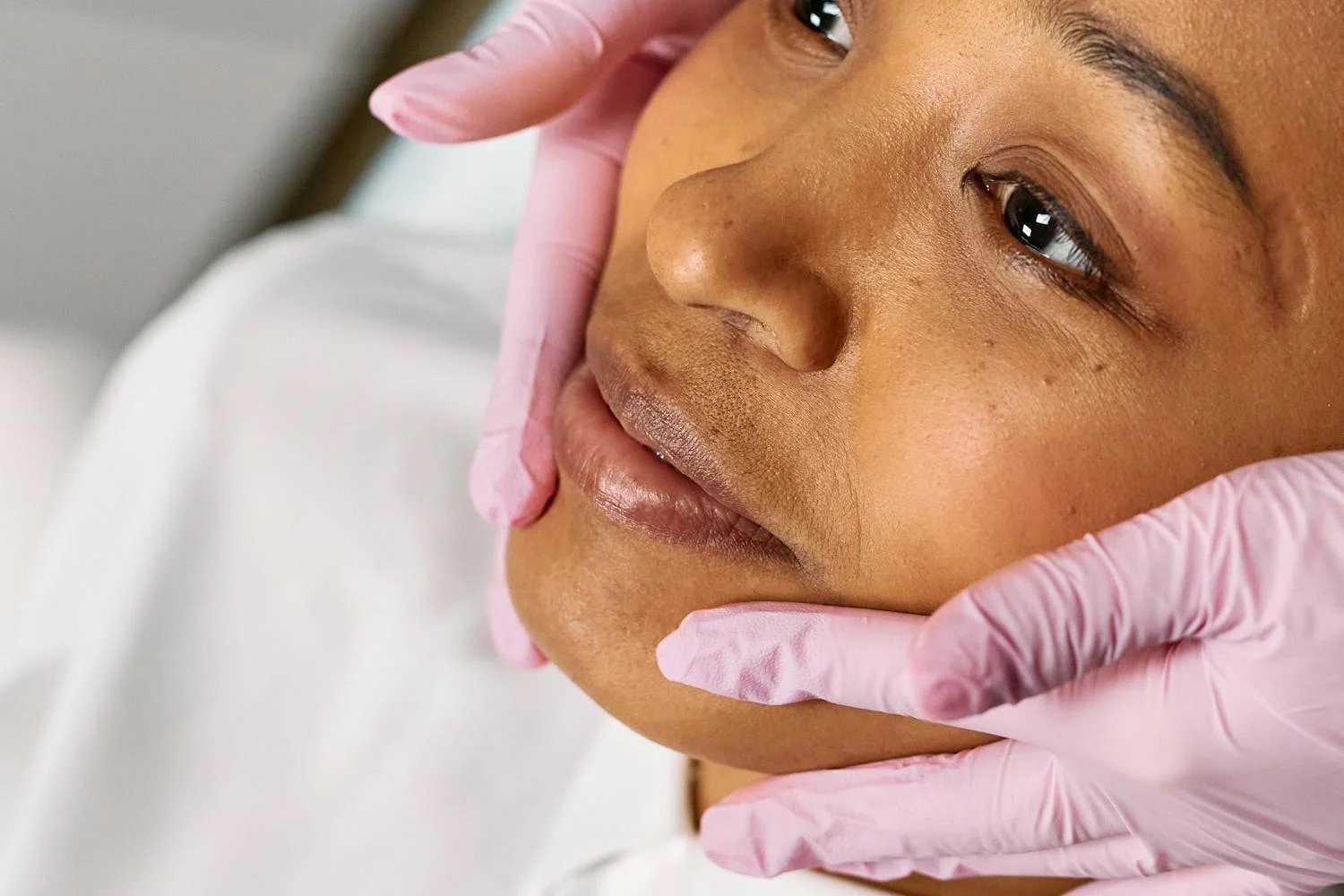
Rosacea
What is Rosacea?
Rosacea is a chronic dermatological condition marked by persistent facial redness, visible blood vessels, and, in some cases, acne-like eruptions. It predominantly affects the central facial regions, including the cheeks, nose, and forehead. Individuals with rosacea may experience symptoms such as frequent flushing, facial swelling, and a persistent, uneven redness that intensifies over time.
Potential Causes and Triggers of Rosacea
Rosacea is a complex condition whose exact causes are not fully understood. However, several factors are believed to contribute to its development. Genetics play a crucial role—if rosacea runs in your family, you are more likely to develop it yourself. This condition may also involve an atypical response by the immune system to otherwise harmless stimuli. Environmental elements such as sun exposure, extreme temperatures, and the use of certain skincare products can exacerbate symptoms, causing the characteristic redness and flushing of the skin. Notably, poor hygiene is not a cause of rosacea.
Various triggers can prompt rosacea flare-ups, adding another layer of complexity to the condition. Common triggers include hot beverages, spicy foods, and alcohol—particularly red wine. Emotional stress, intense physical exercise, and exposure to temperature extremes like harsh sunlight or strong winds can also trigger episodes. Some medications, particularly those that dilate blood vessels, may contribute to flare-ups. Although rosacea can affect anyone, certain groups are more susceptible, including women, individuals over 30, those with light skin, particularly if it has been sun-damaged, smokers, and those with a family history of the condition.
Signs and symptoms of rosacea include:
Facial redness. Rosacea usually causes a persistent redness in the central part of your face. Small blood vessels on your nose and cheeks often swell and become visible.
Swollen, red bumps. Many people with rosacea also develop pimples on their face that resemble acne. These bumps sometimes contain pus. Your skin may feel hot and tender.
Eye problems. Many people with rosacea also experience dry, irritated, swollen eyes and red, swollen eyelids. This is known as ocular rosacea. In some people, the eye symptoms precede the skin symptoms.
Enlarged nose. Over time, rosacea can thicken the skin on the nose, causing the nose to appear bulbous (rhinophyma). This occurs more often in men than in women.
Treatment Options at Image
Intense Pulse Light (IPL) with Lumecca
Lumecca is a very powerful intense pulsed light (IPL). Intense Pulsed Light (IPL) therapy is a non-invasive treatment that uses broad-spectrum light to target blood vessels and pigmented areas just beneath the skin’s surface. The light emitted during IPL therapy is absorbed by the hemoglobin within the blood vessels, which causes these vessels to heat up and eventually be reabsorbed by the body, leading to a reduction in redness, flushing, and visible veins. This process not only diminishes the appearance of rosacea but also helps to improve overall skin tone and texture.
Jet Plasma
Jet Plasma pen is a handheld plasma device that uses a cooler atmospheric temperature so does not create surface trauma like traditional fibroblast plasma. This extremely powerful device penetrates 13,000 volts of plasma through the epidermis, into the dermal and subcutaneous layers of the skin stimulating collagen and remodelling the cellular structure from the inside out. When Jet plasma is mixed with oxide-oxygen, ozone is created which kills surface bacteria and is anti-inflammatory to aid in calming rosacea.
Red Light Therapy
Red Light Therapy (RLT) uses low-level wavelengths light to penetrate the skin and target inflammation, blood vessels, and skin cells. This therapy works by stimulating cellular activity, improving blood circulation, and reducing inflammation, which can alleviate the symptoms of rosacea. This treatment is non-invasive, painless and requires no downtime, making it an attractive option for individuals seeking to manage their rosacea symptoms without the discomfort associated with more aggressive treatments.
Exosomes and Purasomes
Purasomes SGC100+ Complex offers a powerful solution for managing rosacea by revitalizing the skin and enhancing its overall health. This advanced formula contains 20 billion organic colostrum exosomes and 20 functional factors that work synergistically to promote cellular turnover, accelerate blood vessel formation, and reduce inflammation. When paired with treatments such as microneedling, Morpheus8, and Jet Plasma, a Purasome application can work synergistically to calm and repair the skin, addressing the redness and sensitivity associated with rosacea. By improving skin healing and reducing inflammation, Purasomes effectively diminish rosacea symptoms and support a more even, radiant complexion.
OxyGeneo™ 3-in-1 Super Facial
The OxyGeneo™ 3-in-1 Super Facial is a multi-faceted treatment that rejuvenates the skin through exfoliation, infusion, and oxygenation. It starts with gentle exfoliation to remove dead skin cells and unclog pores, followed by the infusion of a nutrient-rich gel that deeply nourishes the skin. Finally, OxyGeneo™ technology stimulates oxygenation, boosting circulation and cellular renewal. For those with sensitive skin, including those suffering from rosacea, the Protect Oxypod is a perfect choice. Unlike traditional exfoliation methods that can be too harsh, the Protect Oxypod is gentle enough to reinforce the skin barrier, reducing irritation and promoting hydration. With ingredients like Turmeric to strengthen the skin barrier, Mangosteen to rebuild damaged skin, and Goji Berries to encourage collagen production, this treatment soothes and improves skin resilience while minimizing the visible effects of environmental stressors.

